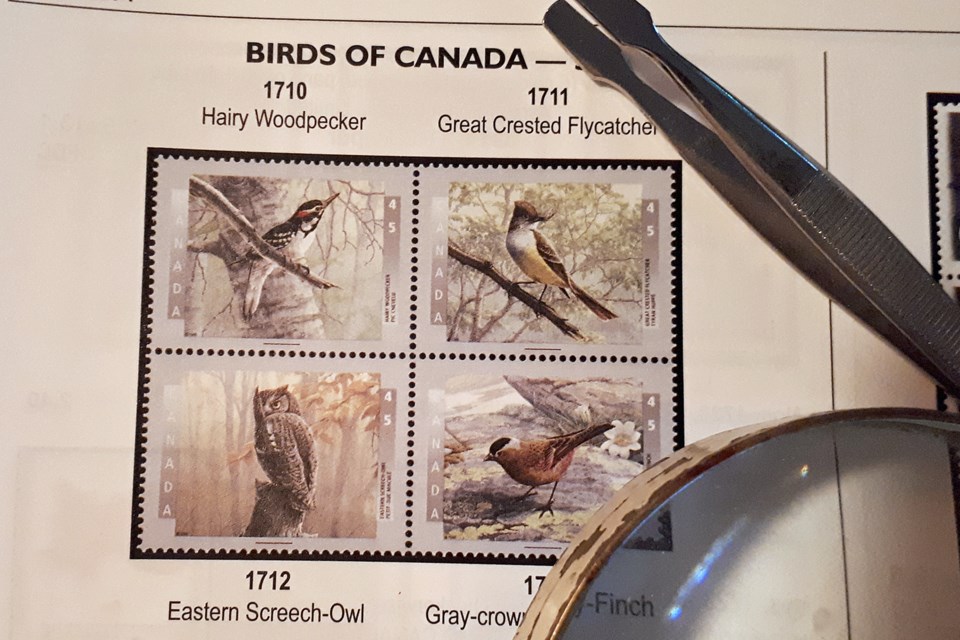I have always been a collector of things, a penchant that started with the challenge of earning my Boy Scout badges.
Started with stamps, then coins and progressed to include comic strips, bird eggs, butterflies and moths, heritage guns, motorcycles, classic illustrated comic books, out-of-print nature books, camera gear, Crown jars, wildlife art and whatever else caught my attention.
Many of these collections have long since dissolved and have been dispersed to others who had not yet sated their curiosity for a particular object of their desire.
While I acknowledge that the taking of eggs from a bird’s nest or the killing of butterflies to mount in a box are not ‘nature friendly’ pursuits, I have no regrets for having done so.
Making collections of natural artifacts has been a rite of passage for naturalists for centuries.
Prior to today’s apps on cell phones or even having access to a good array of illustrated field guides, the best way to learn about Nature was to touch it, feel it, hold it, examine it, collect it, catalogue it. Worked for Darwin, worked for Audubon… worked for me.
Should you wish to make a collection of some artifact or another, there are a few ground rules that should be brought forward.
Firstly, there is a world of difference between ‘building a collection’ and ‘accumulating junk’. If you ever wonder where the line between these realms may lay, just ask your life partner… it’s amazing how decisive they can be about such things.
Secondly, in order to make a true collection, there has to be more than one object in the series to be routed out and proudly displayed. Ideally someone else has already gone down your ‘rabbit hole’ and has amassed an impressive collection of do-hickies and what-nots… which has them creating a catalogue to give you direction and scope of your upcoming dalliance.
While this may be true for Crown jars or types of barbed wire, it doesn’t always happen for natural artifacts. While you may collect local wildflowers and press them for inclusion within a herbarium, your checklist of which flower to collect next is pretty well up to you.
Depending on the subject matter there may well be collections within collections.
Postage stamps do that... you can just look for Canada stamps, or Canada stamps depicting wildlife species, or Canada stamps that highlight botanicals. Or for the truly fanatical… all the different paper types that postage stamps have been printed on (don’t laugh, you’ll hurt somebody’s feeling, those folks are out there).
I have found that as I ‘collect’ photographs of wildflowers, it’s the local ones that I’m most interested in tracking down, although I could categorize them as being representative of Carolinian, Atlantic coastal, alvar affiliate or Shield based, or maybe start by grouping them by botanical designation: rose family, buttercup family, mustard family.
Way back in the mists of time my first wildflower photo collection was divided simply by white ones, yellow ones, red ones and so on.
One of the disappointments of creating a collection is that once all the representative parts have been found, acquired and catalogued… now what? Hint: never ever let your life partner know that you have reached this point… such an admission will raise false hopes that the half of the garage housing your ‘collection’ may suddenly become available for a potting shed, as was the original plan 35 years ago.
Disposing of a collection is not the same as having a lawn sale to move out accumulated stuff, regardless of what you-know-who says.
A good collection, whether it be beer bottles, buttons, baseball hats or comic books is the result of years of dedicated effort, a personal creation of something meaningful. How can you be expected to just shunt it aside and embrace the new space on the empty shelves?
But it can be done. My Dad once had a collection of over 500 Avon bottles and as they were sold off or given away, it was kind of fun to see the eyes light up of the recipients. While I regret every sale of the heritage rifles I once owned, there is an inner contentment knowing that, yes, I was once the owner of that particular piece.
This column is obviously the result of something I’m going through at home. Being between contracts, as they say, has afforded me a bit of time to purge our closets of dusty things that once were deemed ‘collectable’. Should it stay or should it go? Do 23 rocks taken from places now forgotten make a collection?
Not all collections can, or should, be disposed of: I still have my bird egg collection squirreled away in a storage area (as it’s illegal to have such things nowadays… shh, don’t tell anyone).
With the warm weather arriving and the softening of COVID regulations, maybe lawn sales will start again… not that I have any need to go there…
